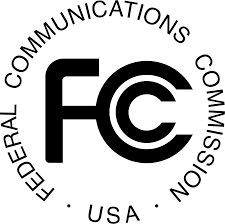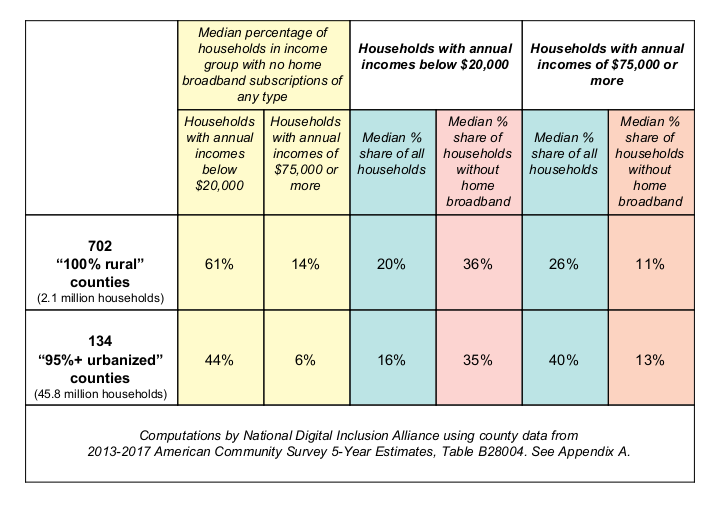 NDIA has once again urged the Federal Communications Commission to consider broadband adoption rates and affordability in the agency’s annual assessment of “whether advanced telecommunications capability is being deployed to all Americans in a reasonable and timely fashion”.
NDIA has once again urged the Federal Communications Commission to consider broadband adoption rates and affordability in the agency’s annual assessment of “whether advanced telecommunications capability is being deployed to all Americans in a reasonable and timely fashion”.
NDIA Executive Director Angela Siefer and Research and Policy Director Bill Callahan responded to the the FCC’s “Fifteenth Broadband Deployment Report Notice of Inquiry“, which asks for public comment on the latest version of the agency’s annual Broadband Deployment Report — released in May — and on its approach to determining whether U.S. broadband deployment is happening in “a reasonable and timely fashion”, as required by Section 706 of the Telecommunications Act of 1996.
Here’s the FCC majority’s opinion on that question, from the Notice of Inquiry‘s “Background” section:
In the 2019 Broadband Deployment Report, [the FCC] concluded that advanced telecommunications capability was being deployed to all Americans in a reasonable and timely fashion. The 2019 Report showed that the number of Americans lacking access to fixed terrestrial 25 Mbps/3 Mbps service had fallen from 26.1 million to 21.3 million, an 18% decrease, and that the majority of those newly connected Americans were located in rural areas… Thus, the 2019 Report concluded that, due to the Commission’s policy efforts, “the digital divide has narrowed substantially, and more Americans than ever before have access to high-speed broadband.”
The comments submitted by Siefer and Callahan strongly disagree with that assessment, objecting that the FCC is still using “access” and “digital divide” to refer only to the physical availability of broadband networks, not to actual broadband connection or use by households.
There are many reasons for digital inclusion practitioners and advocates to be disappointed in the 2019 Broadband Deployment Report, but they all come down to this: The Commission reiterates its determination to reduce “the digital divide” but continues to distort the common meaning of that phrase to refer only to gaps in physical high-speed network availability. The Commission is ignoring the degree to which Americans are “digitally divided” by their ability or inability to pay the prices being demanded for access to the networks that are physically available. The Commission is not reviewing or considering the critical issues of broadband cost and affordability in its analysis…
In line with that distortion, the Commission continues to define the unmet need for “reasonable” broadband deployment as an exclusively rural problem, choosing not to consider the millions of unconnected and less-connected households in America’s urban centers, suburbs, and smaller cities and towns. The cost of home broadband service is a barrier for all residents of the U.S., regardless of geography.
NDIA’s comments present the results of a new analysis of county-level broadband subscription rates from the U.S. Census’ most recent American Community Survey (2013-2017 ACS 5-Year Estimates). NDIA compiled the numbers and percentages of households with “no broadband Internet subscription of any type” for all U.S. counties where 100% of residents lived in rural areas in 2010 (the last time the Census made that determination), and for.all counties where at least 95% of residents lived in “urbanized” areas. For each set of counties, NDIA calculated the median “zero-broadband” rates for households with annual incomes below $20,000, and for households with incomes of $75,000 or more. NDIA’s comments summarize the results in this chart:
“Three things are evident from this comparison,” according to Siefer and Callahan:
Rural households are at a genuine disadvantage vis-a-vis urban households when it comes to basic Internet access. But that disadvantage is significantly greater for lower-income rural households than for their wealthier neighbors.
The gap in home broadband connection rates between poorer and wealthier households, whether rural or urban, is much bigger than the gap in connection rates between rural and urban households at any income level.
Addressing the nation’s “digital divide” primarily as a rural broadband infrastructure problem, with no consideration for the affordability of home broadband services – or for other barriers to broadband adoption, particularly digital training – is extremely short-sighted.
You can download NDIA’s comments from the FCC website, along with an appendix containing details of the county analysis.
